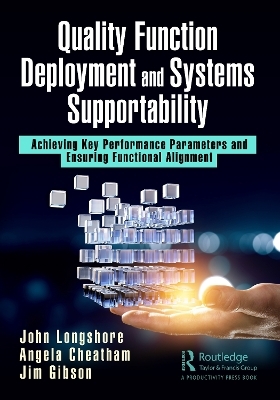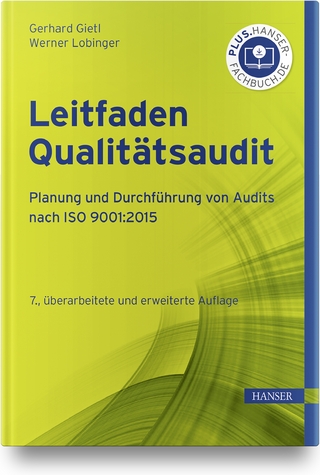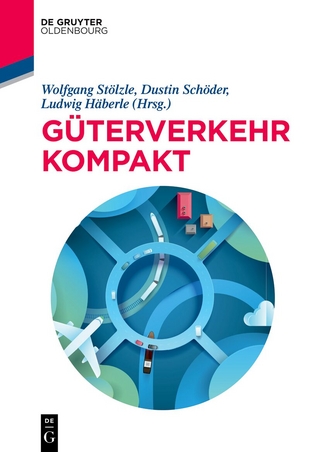
Quality Function Deployment and Systems Supportability
Productivity Press (Verlag)
978-1-032-37251-8 (ISBN)
QFD is widely spreading throughout the world because of its outstanding usefulness. It is aimed to fulfill the customer’s expectation of a product or service design. Organizations of all sizes are using it to (1) save product and service design and development time, (2) focus on how the product or service might satisfy the customer and (3) improve communication at all levels of an organization during the development process.
Based on these three reasons, today's traditional QFD can be divided into three branches and analyzed. First, QFD can be implemented effectively for developing new products and designs by establishing the linkage between design stages through the manufacturing environment. However, research has found that traditional QFD is quite weak in implementing modifications to existing product and service design during its predicted lifecycle. Second, most research to this point has been squarely focused on the “voice of the customer” for prioritizing customer needs. While certainly needed, the “voice of the system” that is being used to produce the product/service and how they operate during its intended life cycle has been given less attention. Third, QFD is often viewed as overly labor-intensive and thus costly, and, because of its team-based development logic, manual in nature by those involved during its development and implementation.
Research has shown that life cycle sustainment planning and support for current or proposed products and/or services requires a seamless and balanced life cycle support methodology. To achieve this type of support, twelve functional elements have been identified that form the product support infrastructure. A new approach, one that views product support as an integrative activity where all twelve product support elements are assessed over the entire product and/or service life cycle is being deployed.
With this deployment comes a need to ensure Key Performance Parameters (KPPs) are achieved and functional alignment obtained by balancing supportability element cost and provisioning throughout the entire product and/or service lifecycle, not just during the development stage, and to view the system as the “customer” and thus listen to the “Voice of the System” when assessing supportability requirements. Quality Function Deployment (QFD) is such a tool.
This book contains four sections. Section 1 provides an initial overview of QFD origins, and history and highlights some of its use today. It addresses how QFD fits within the organization, increasing revenue, and reducing cost. It outlines a step-by-step strategy for successfully deploying QFD within the organization. Section 2 examines the evolving product and/or service requirement, creating the design solution using QFD, assessing supportability characteristics using QFD, and performing functional supportability analysis using QFD. Section 3 provides a guide for developing the life cycle supportability solution using QFD methodology on an ongoing basis, and managing processes throughout the systems lifecycle. Section 4 addresses using QFD in an imperfect world and will provide insight into how to use QFD beyond the standard “house of quality” concept.
John Longshore, PhD. is an Associate Professor of Management within the David B. O’Maley College of Business at Embry Riddle Aeronautical University’s Daytona Beach Campus. His academic teaching responsibilities include Systems Engineering Management, Project Management, Production and Operations Management, Quantitative Methods in Business, Lean Six Sigma and other related business courses. Dr. Longshore is a designated Naval Aviator with over 4,000 hours of operating and command experience in fixed and rotary-wing aircraft. Over a 22 years career in the Marine Corps Dr. Longshore developed and managed the introduction of numerous aircraft systems to include the CH-53E, AV8A/B and MV-22 systems. Upon his retirement from the Marine Corps Dr. Longshore oversaw the introduction of the F/A-18A and F-117 aircraft systems into the international inventory via Middle East introduction in Kuwait. Working with Booz-Allen and Hamilton Dr. Longshore developed numerous fleet logistical readiness models which continued to be employed today. After joining Northrop Grumman as Director of Aeronautical Systems, Dr. Longshore served as the Production Manager for the Aerostructures division in Nashville, TN. and then the Vought Aircraft Manufacturing site in Dallas TX. Selected as a Vice President of Operations for a joint venture between Northrop Grumman, Lockheed Martin and Sikorsky Aircraft Corp. Dr. Longshore planned, built and managed a regional Maintenance, Repair and Overall facility in the United Arab Emirates. Dr. Longshore holds a BS degree for the Naval Post Graduate School in Industrial Engineering, BS degree Aviation Management and MBA/A from ERAU, Executive MBA from the Wharton School and a PhD from Nova Southeastern University. He is professionally certified as a Six Sigma Master Black Belt, Lean Six Sigma Sensei, Master Professional Logistician, Supply Chain Professional, Project Management Professional, Airframes and Power Plants Mechanic, Scrum Master, Blockchain Professional, Society of Quality Assurance Professional and American Society of Appraisal (ASA) Appraiser. Angela Cheatham, Ph.D.is an Assistant Professor of Management with the O’Maley College of Business at Embry-Riddle Aeronautical University. She teaches supply chain management from a logistics perspective, general management, and management of production and operations. Throughout her career, she has worked with the development and implementation of processes and policies related to management and operations, logistics, and curriculum. Dr. Cheatham holds a BS in Technical Management and MS in Management with a specialization in Integrated Logistics from Embry-Riddle Aeronautical University. She earned her Ph.D. in Business Administration with a concentration in Homeland Security, Leadership, and Policy. Published dissertation focused on U.S. Space Policy and space operations. She holds a yellow and green belt in six sigma and has participated in FAA and industry projects focusing on commercial space integration, supply chain, and lean processes. James R. Gibson, Ph.D. is an Assistant Professor of Engineering Management with the College of Business at Embry-Riddle Aeronautical University. His academic teaching responsibilities include engineering management, quantitative analysis, and business analytics. Dr. Gibson is a retired United States Marine Corps naval aviator, squadron commander, experimental test pilot, weapons and tactics instructor, forward air controller, and qualified in the KC-130, V-22, and six additional type model series aircraft. Following the Marine Corps, Dr. Gibson worked for Bell as an experimental test pilot and Simplified Vehicle Operations technical lead supporting the V-280, V-247, BH525, BH360, and APT programs. His research focuses on energy economics and sustainability in urban air mobility. In addition, he works with organizations in East Africa and India to assist subsistence farmers in growing trees to generate carbon offsets. Dr. Gibson holds a BS in Biochemistry from Virginia Tech, a MAS in Aviation Safety from Embry-Riddle, a MoE in Industrial and Systems Engineering from North Carolina State University, Ph.D. in Systems and Engineering Management from Texas Tech University, and an MBA from Duke University’s Fuqua School of Business.
1. QFD: Its Origins and Objectives
2. How QFD Fits in the Organization
3. Step-by-Step QFD: A Strategy for Success
4. The Evolving Product and/or Service Requirement
5. Creating the Design Solution Using QFD
6. Assessing Supportability Characteristics Using QFD
7. Performing Functional Supportability Analysis Using QFD
8. Developing the Support Solution Using QFD
9. Applying and Monitoring QFD on an Ongoing Basis
10. Managing the QFD process
11. QFD in an Imperfect World
12. Beyond the House of Quality
| Erscheinungsdatum | 03.11.2023 |
|---|---|
| Zusatzinfo | 23 Tables, black and white; 132 Line drawings, black and white; 132 Illustrations, black and white |
| Verlagsort | London |
| Sprache | englisch |
| Maße | 178 x 254 mm |
| Gewicht | 740 g |
| Themenwelt | Technik ► Umwelttechnik / Biotechnologie |
| Wirtschaft ► Betriebswirtschaft / Management ► Logistik / Produktion | |
| Wirtschaft ► Betriebswirtschaft / Management ► Unternehmensführung / Management | |
| Wirtschaft ► Volkswirtschaftslehre | |
| ISBN-10 | 1-032-37251-6 / 1032372516 |
| ISBN-13 | 978-1-032-37251-8 / 9781032372518 |
| Zustand | Neuware |
| Informationen gemäß Produktsicherheitsverordnung (GPSR) | |
| Haben Sie eine Frage zum Produkt? |
aus dem Bereich


